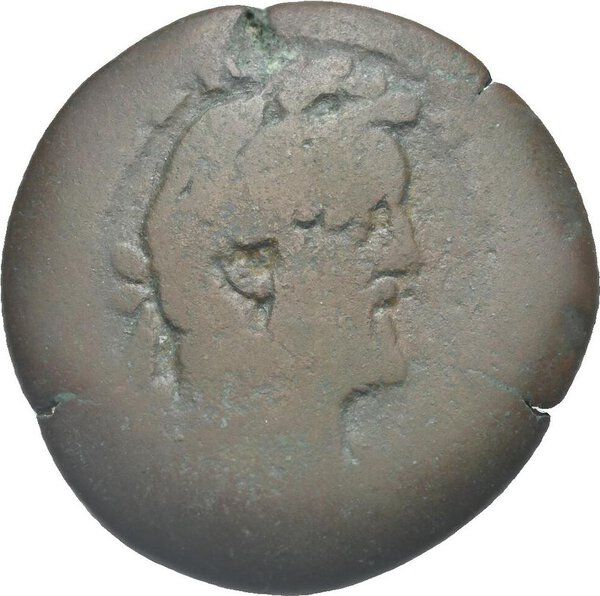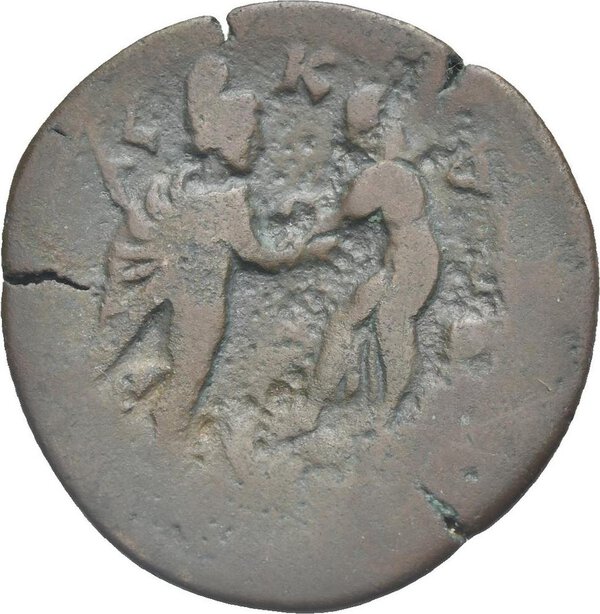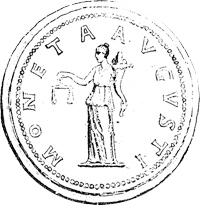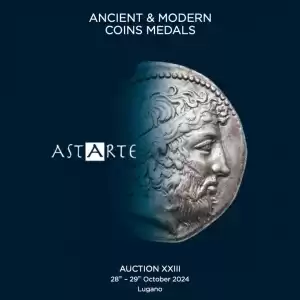

Egypt, Alexandria. Antoninus Pius, 138-161. Drachm (Bronze, 31.49 mm, 15.44 g). Dated RY 24 (= 160/61). [TI AI A∆PIA ANTωNINOC C ЄB EV] Laureate and draped bust right. Rev. Perseus and Andromeda: Perseus advancing right, wearing Phrygian cap and chlamys, holding a harpa with his left hand over his left shoulder, extending his right hand to Andromeda; Andromeda is stepping down from a rock base, wearing chiton, and extending her right hand to Perseus, her left hand is held to her breast; between them, L / K / ∆ (date) across upper field. Geissen 1856. Dattari-Savio 2994 & 8840 (this coin). RPC IV.4, 2189.20 (this coin cited). Emmett 1637. Staffieri, Alexandria In Nummis, 134. Brown patina. Fine. Very rare.
Emmett lists the type for the years of reign 20 and 24 of Pius, but his reference for RY 20 is Dattari 2990, but in the Dattari-Savio plates the ∆ (K∆ = 24) is visible, hence this is a one-year type only.
Ex Giovanni Dattari Collection, 2994. Ex Naville Numismatics Ltd. 45, 09.12. 2018, lot 315.
On the reverse of this drachm we admire a fitting numismatic interpretation of another famous myth of Greco-Roman theology: that of the freeing of Andromeda by the hero Perseus, son of Zeus and Danae, in an eminent specimen already in the Dattari collection. According to legend, the young Andromeda was chained to a cliff above the sea at the mercy of a sea monster that was supposed to devour her. Perseus decided to free her. He killed the monster and helped her to leave the place of her agony, which is the scene engraved on the coin, at last making her his bride. Cf. also Staffieri G. M., Alexandria in Nummis, nr. 134, pp. 267-268.


